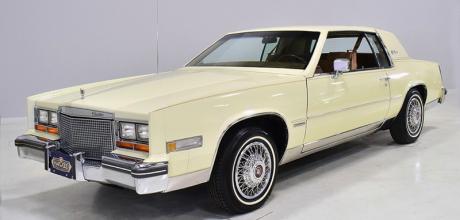First production car with cylinder deactivation 1981 Cadillac Eldorado
When posing the question of which technological steps to take to improve vehicle fuel economy, the answers tend to fall on the side of engine downsizing.
THE INNOVATORS The cars we drive today were influenced by these pioneers
Even America – traditionally seen by motorists as the land of the free and the home of cheap petrol and burbling V8s – is not immune to the pressures of rising fuel prices and tightening emission legislation. General Motors decided to embark on a series of fuel-saving measures for its products. The first step was to downsize its 7,0-litre V8 unit to 6,0 litres, but the results were not convincing. The option of retooling its engine plants to accommodate even smaller displacements was considered economically unviable, so GM concluded that the next-best alternative was to apply some innovative fuel-saving technology to its 6,0-litre V8: cylinder deactivation. This concept was not entirely new.
Back in 1905, the short-lived Sturtevant motor company built a car with a six-cylinder engine featuring an early cylinder deactivation system that allowed the driver to cut off three cylinders by turning off one of the magnetos to lift the exhaust valves.
GM’s solution was the L62 engine. Co-developed with Eaton Corporation (best known for its superchargers), the L62 used a computer command module that interpreted such parameters as engine speed, manifold pressure, exhaust gas recirculation and air pump operation. Depending on their respective statuses, the module could then determine whether to deactivate either two or four cylinders by disengaging the rocker arms to close their respective intake and exhaust valves. In essence, this would allow a 6,0-litre V8 operating at light loads to return similar fuel consumption to a 4,5-litre V6 (two cylinders down) or a 3,0-litre V4 with half the V8 deactivated. Cadillac claimed the snappily named V8-6-4 would improve fuel consumption by up to 30%. The reality was less promising.
The command module’s microprocessor struggled to juggle the tasks of dealing with the constantly fluctuating data from rapidly changing driving conditions, in addition to the deactivate-activate-deactivate cycle of the cylinders. This would cause the car to lurch, sometimes hesitate, or even stall under certain throttle loads. Despite 13 updates, the system never worked as intended and dealers resorted to deactivating it altogether, reverting V8-6-4 models to their default V8 setting.
While GM’s tilt at cylinder deactivation was ultimately unsuccessful, the idea wasn’t completely abandoned. More recently – and thanks in no small part to the significantly improved processing power of modern ECUs – cylinder deactivation systems have evolved to accommodate skip-firing configurations (where cylinders are shut off in a variety of combinations as needed in GM’s 6,0-litre V8). They can even manage engine load, throttle and the abovementioned parameters to the extent that the technology has found its way into four-cylinder engines such as active cylinder technology (ACT) units and versions of Ford’s three-cylinder EcoBoost turbopetrol.
THEY ALSO PAVED THE WAY
1933 CITROËN ROSALIE
The French-built Rosalie was one of the very first cars to move diesel propulsion away from commercial applications and into the motoring mainstream, with a 1,8-litre unit in its efficient Familie station wagon model.
1955 MERCEDES-BENZ 300SL W198 Gullwing
While it was solely aimed at improving speed and outright performance, the Mercedes-Benz 300 SL’s revolutionary direct fuel injection system cast the die for future engines running a more efficient injection system.
1996 GENERAL MOTORS EV1
The EV1 was the first mass-produced, purposed-designed electric car from a major manufacturer, being leased to the public from 1996 to 1999. Well ahead of its time, the EV1 was an experiment that few believed would work.
1997 TOYOTA PRIUS
As the first production-series hybrid, the Prius was the first car to bring petrol-electric hybrid driving to the masses. It soon became a popular seller for Toyota and allowed hybrid engine technology to be accepted into the mainstream.


